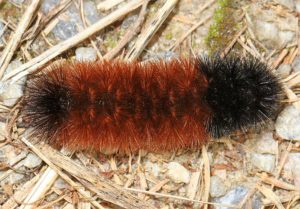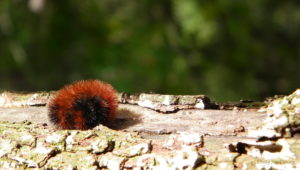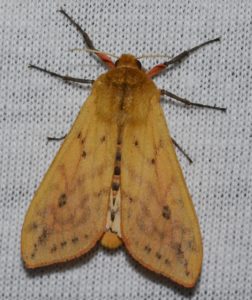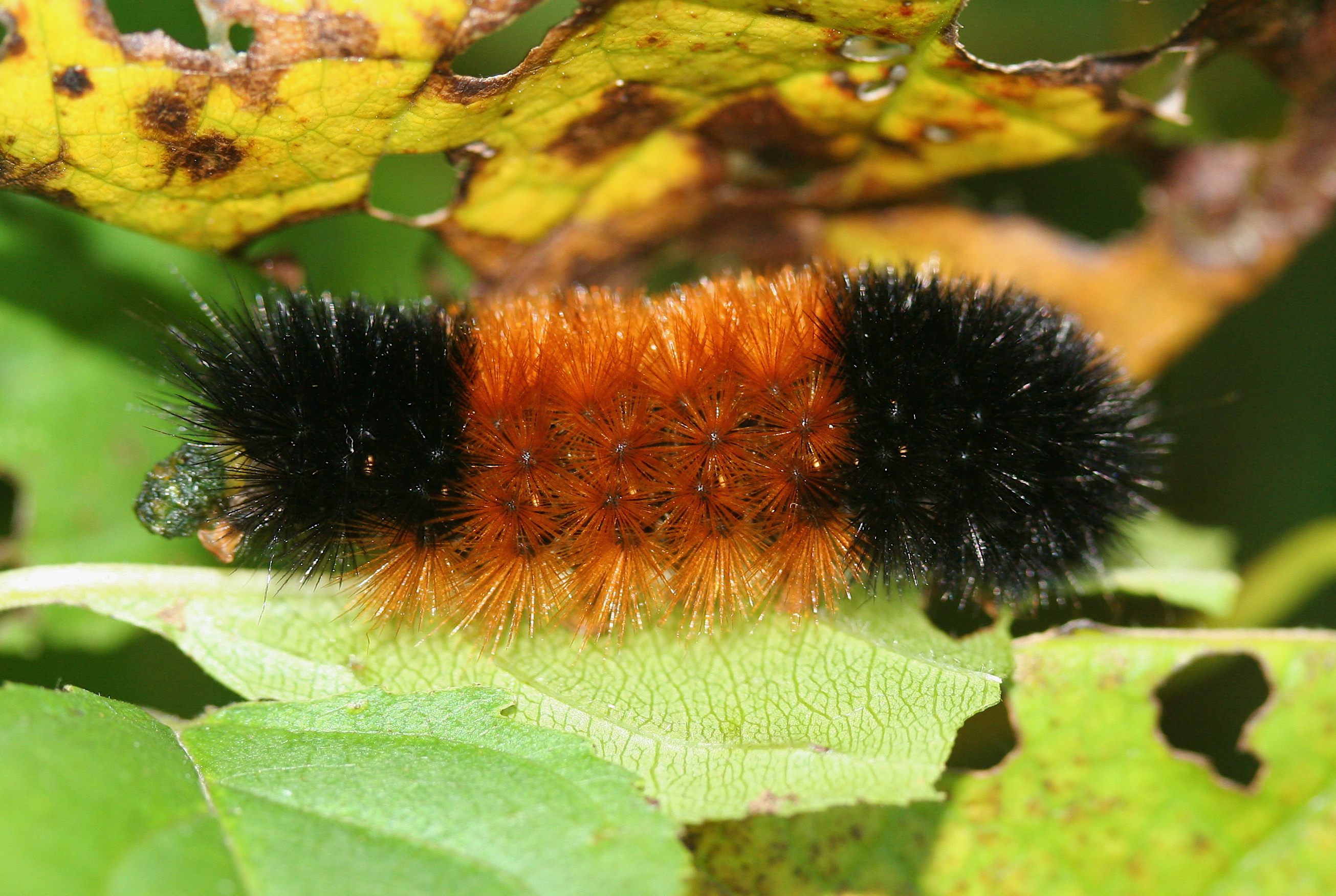Groundhog Day has come and gone and Punxsutawney Phil predicted an early spring, even though we in Central Maine just received 6 inches of snow with more arriving later this week. Luckily, folks living in northern climates have one more critter to look towards for hope of spring’s arrival; the wooly bear caterpillar!

The wooly bear caterpillar is a truly adorable creature. The larval stage of the Isabella tiger moth (Pyrrharctia isabella), these insects are covered in short, bristly hair-like projections called setae, which inspired their common name. These setae are found all along the caterpillar’s body, with those in the mid-section being a ruddy orange color and those on either end being black. These projections may appear fluffy and cozy for the caterpillar, but they actually don’t play much of a role in keeping these critters warm (they are much more useful in defense). Instead, wooly bear caterpillars have another extraordinary adaptation that allows them to survive cold temperatures. They can freeze completely solid!

Each fall, new caterpillars emerge from eggs laid by female moths over the summer. After grazing their fill, the young wooly bears find a nice sheltered spot in which to ride out the winter. But these wooly bears don’t hibernate quite like real bears. Instead, they experience a process known as quiescence. As the temperature drops close to freezing, these caterpillars produce an antifreeze chemical in their hemolymph (insect blood). This antifreeze solution builds up in the caterpillar’s tissues and prevents too much ice from forming within the animal. Through this adaptation, the wooly bear can withstand subzero temperatures and multiple freeze/thaw cycles. When spring finally arrives, the cater-cicle thaws and emerges from its shelter. You can be quite certain that spring has arrived once these critters emerge from their hidey-holes. Once they appear, the caterpillars spin wooly cocoons where they pupate and emerge later as Isabella tiger moths.

While I personally take the appearance of the wooly bear caterpillar as a sign of spring, there is another interesting folklore tradition attached to this insect. According to legend, once these caterpillars hatch from their eggs in autumn, one can get an idea of how severe the coming winter will be based on the relative length of the animal’s colored bands. A wide orange patch foretells of a short, mild winter while a narrow orange band suggests a much longer and colder period of ice and snow. The direction a caterpillar is seen crawling is said to indicate even more about the upcoming winter. A wooly bear traveling south is said to be escaping from the onslaught of a vicious cold spell; a more northerly traveling insect signals more mild weather. As fun as it may be to gauge the weather based on insect fuzz, there isn’t much science to back the claims of the caterpillar oracle. In fact, the amount of black on the insect is due entirely to age, rather than anything dealing with weather. But these incredible creatures still deserve our admiration for withstanding some truly harsh conditions and all while remaining charming little fuzz balls.
References:
- Boeckmann, C. Woolly Bear Caterpillars and Weather Prediction. Old Farmer’s Almanac. Available at: https://www.almanac.com/content/woolly-bear-caterpillars-and-weather-prediction. (Accessed: 9th April 2019)
- Layne, J. R., Edgar, C. L. & Medwith, R. E. Cold Hardiness of the Woolly Bear Caterpillar (Pyrrharctia isabella Lepidoptera: Arctiidae). The American Midland Naturalist 141, 293–304 (1999).
- Marshall, K. E. & Sinclair, B. J. The sub-lethal effects of repeated freezing in the woolly bear caterpillar Pyrrharctia isabella. Journal of Experimental Biology 214, 1205–1212 (2011).
Featured image by IronChris, CC BY-SA 3.0




